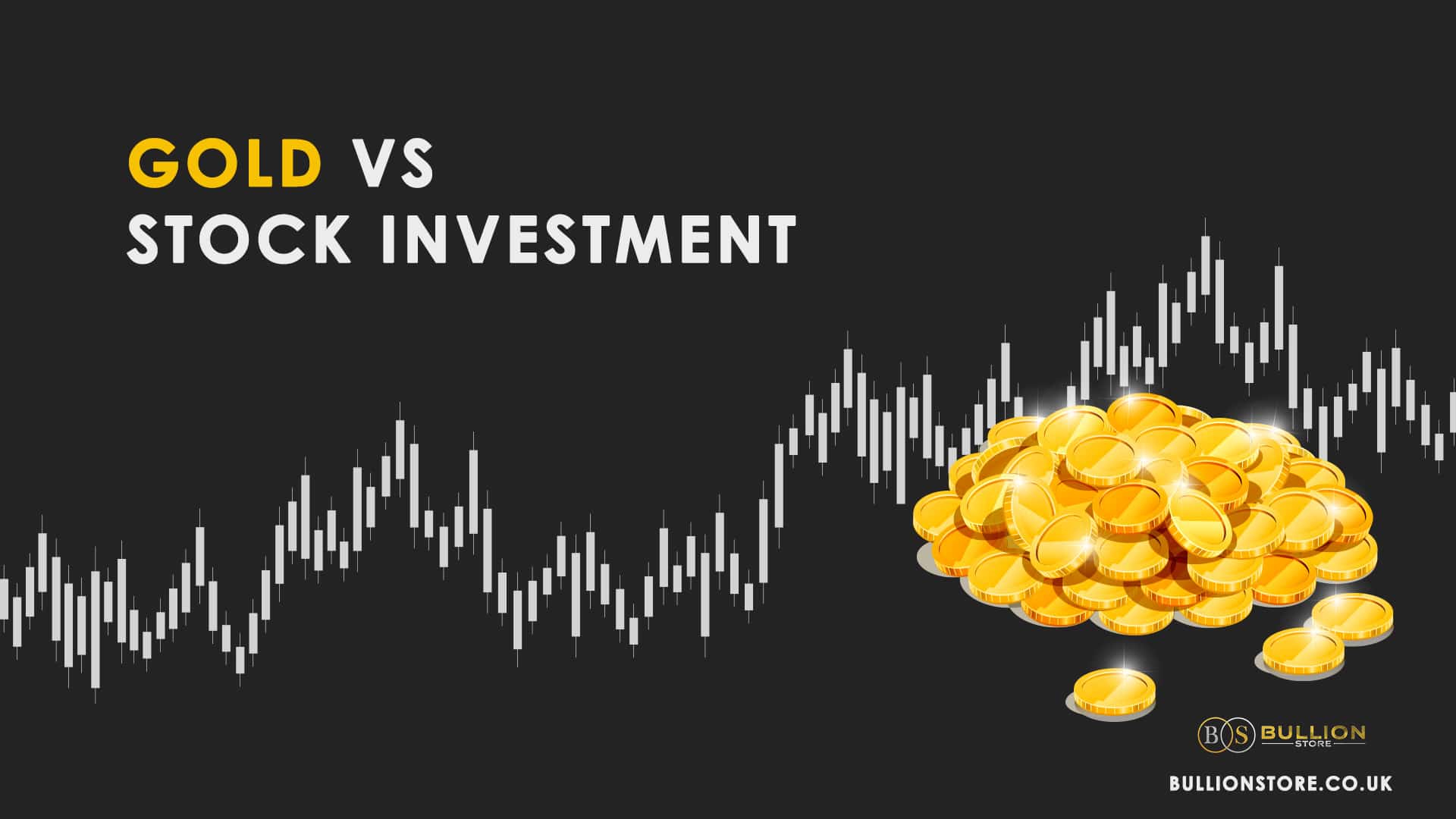Gold or Stock investment?
Gold is considered a safe investment, but it can also be risky at times. The price of gold does not typically move with market prices which means that investors may purchase when markets are soaring and then find themselves in financial trouble if the value plummets before they have time to sell their assets for profit. On the other hand, history has shown that people turn towards investing in this precious metal during times of fear as well – so there isn’t much security after all!
Furthermore, gold is not an income-generating asset. Unlike stocks and bonds for which the return on investment relies mostly on price appreciation, with gold, other costs come into play such as storage and insurance expenses to take care of this physical possession. Gold shines as a hedge against falling stock markets, but that is not all it has to offer. Over the long-term, gold holds up well and, in some cases, is better than stocks do!
Gold’s $639 billion market capitalization provides an excellent way for diversifying your portfolio while also being exposed to one of the more stable investments on earth; guaranteeing you will never lose money unless there is another world war or something else cataclysmic comes along.
KEY TAKEAWAYS
- Gold has long been considered a durable store of value and a hedge against inflation.
- Over the long run, however, both stocks and bonds have outperformed the price increase in gold, on average.
- Nevertheless, over certain shorter periods, gold may come out ahead.
Gold vs. Stocks and Bonds
Gold has shown its worth over the long term, but it depends on what period is being analyzed. For example, stocks have outperformed gold and bonds for 30 years–but not so much when compared to 15 years.
From 1990 to 2020, the price of gold increased by around 360%.2 Over the same period, the Dow Jones Industrial Average (DJIA) gained 991%.
The price of gold has increased 330% since 2005 and 154%. This means, over the last 15 years stocks have outperformed gold by 3-to-1. But if we look back to the 1920s through today, then it is reversed with a huge difference in performance for DJIA at 24 times greater than that of Gold!
Corporate bonds have returned a little less than stocks and gold over the past 30 years. Over 15-year periods, they return about 3% lower than both stocks and gold.
Some history
The price of gold has a long and storied history that dates back to 1934. That year, the Gold Reserve Act was introduced by US President Franklin Roosevelt who also set an official $35 per ounce price on something so valuable as gold. This continued until 1971 when President Nixon closed the window for U.S citizens to purchase more than one-tenth of their annual income in coins or bullion from The United States Treasury Department.
Gold is a precious metal that has appreciated over time. From 1971 to 2020, gold’s worth increased by 4500% and it can be expected for this trend to continue thanks to its inherent rarity.
In July 2020, the price of gold had surpassed its previous all-time price high of nearly $2,000 an ounce the highest since September of 2011.
As with any investment, it’s important to consider the time frame on your investments as well as do some research into how markets are expected to perform. This will give you a clear understanding of whether now is the right time for investing or if there might be better opportunities in other areas which would provide more return at this point in history.
Conclusion
Gold is not always a perfect investment because depending on how the global economy goes, its price can fluctuate. But with any investments, you should diversify your portfolio and gold could be one of those things to invest in when the market dips down as typically it increases at that time.
Gold has been seen by many investors as a foolproof investment due to its increased worth during economic downturns or depressions. However, this isn’t entirely true for several reasons; firstly, there are factors other than just an economical state which influence their value such as geopolitical issues around mining production sites like South Africa where strikes have led prices up recently since workers were demanding higher wages from miners’ companies before they would go back into mines (BBC).
Gold has long been a favourite of people looking to store their wealth and protect it from inflation. The price per ounce is largely dependent on the dollar’s value, so an increase in supply would lead to devaluation.
The durability and relative stability that gold offers make it attractive for investors seeking security with minimal risk or who are less confident about other commodities like oil which have fluctuating prices heavily influenced by geopolitics.









Add comment